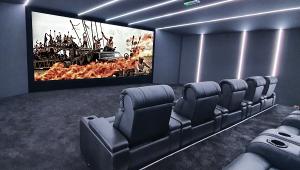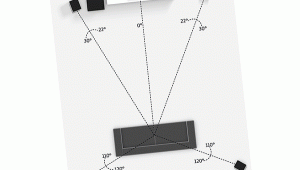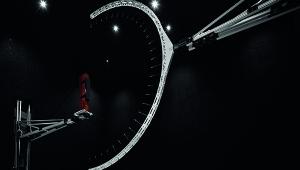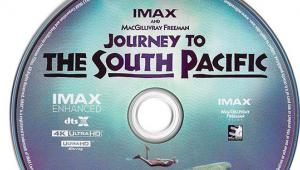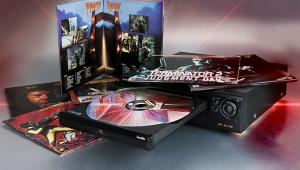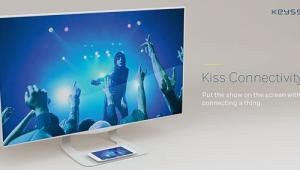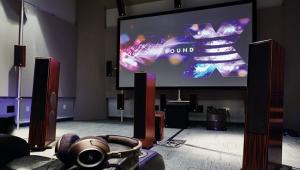Looking back at the birth of Blu-ray

By 2000, DVD was established as one of the great success stories of consumer electronics. A mere two years after its UK launch, it had revolutionised how many viewed movies at home and, unlike its enthusiast-only analogue LaserDisc predecessor, had pushed the idea of home cinema into the mainstream. DVD offered practical benefits – durability, compactness and ease-of-use – alongside outstanding picture quality (relative to VHS) and multichannel audio. It also spoilt movie lovers with special features and heralded the arrival of 'just add TV' all-in-one systems. But no sooner had film fans begun throwing away their VHS tapes and LaserDiscs, another revolution was underway.
DVD's problem, if you can call it that, was that it was almost old-fashioned from day one. High-definition TV had been available – albeit expensively – in Japan since the late 1980s, using the Hi-Vision satellite system, and there was also the more experimental HD-MAC platform in Europe. Both were analogue, and could be viewed on enormous TVs using the long-established cathode ray tube (CRT) technology. People who saw HD MAC pictures – coverage of the 1992 Barcelona Olympics, for example – were wowed, but accepted that they would have to wait for more practical displays.
These began to appear in the late 1990s, around the same time that HDTV broadcast pioneers started the move from analogue to digital. In 1998, digital HDTV services began in the US, with pictures encoded at 1080i or 720p, via a version of MPEG-2, with stereo or 5.1 Dolby Digital soundtracks. The following spread of hi-def broadcasts and hardware around the globe took its time – the UK, for example, didn't get its first HD channel until 2006 – but the direction of travel was obvious.
A version of DVD more in line with where TV hardware and broadcast standards were heading was sought. There were, however, media capacity constraints. In 1998, the capacity of a DVD may have seemed enormous, but it fell short of HD's requirements. A two-hour 1080i movie, built around MPEG-2 and Dolby Digital, could occupy in the region of 20GB – while DVD was 4.7GB.

One solution was to use a newer and more efficient codec, such as VC-1, to 'crunch down' the video still further so that it could fit onto a DVD. In March 2002 the DVD Forum, which licensed the format and maintained its standards, actually voted to approve such a proposal. Had it gone ahead, the cost of manufacturing hi-def movie discs would have been low as they could have been quickly churned out by existing DVD plants.
Hardly surprisingly, a number of studios were keen on the idea. But it became clear to the DVD Forum that existing capacity was insufficient for movie-length HD visuals of acceptable quality – certainly when the limitations of the era's compression technology were factored in. What was needed was a new approach, and it all boiled down to lasers.
Pits and lands
Famously, the CD was the first consumer application of a laser. The technology works with a sensor, which picks up the light 'bounced off' the information-carrying 'pits' and 'lands' on the disc. This is converted into a bitstream, from which the audio is recovered. CD players rely on an infra-red laser, with a wavelength of 780 nanometres.
DVD discs had the same 5in diameter as a CD yet could store so much more data than the latter's 700MB. How so? DVD switched to a red laser with a shorter wavelength (650 nanometre), which allowed the pits and lands to become smaller, and the information density of the disc to increase.
Furthermore, the format used a very clever trick to almost double capacity. DVD9s – dual-layer DVDs, as used by the majority of commercial releases – relied on a second layer (with another spiral data track). This was buried 'deeper' within the media than the first, which was made deliberately less opaque. The optical blocks of all DVD players could focus on this deeper layer, so the information could be read reliably.
It therefore stood to reason that if the wavelength could be shortened still further, disc capacities could be increased to the multiple-gigabyte levels that hi-def entertainment called for.
Making this possible were significant advances in optics and electronics. One of the fruits of this research – notably the work done at the University of California by Dr. Shuji Nakamura – was a laser capable of operating at 405 nanometres. Radiation at that wavelength is seen as blue-ish light – hence the name of the Blu-ray format it helped make a reality. Using a 405-nanometre laser, the spiral track accommodated by a 5in disc could be almost 30km in length, and 25GB in capacity. Add in a dual-layer design and you get to the 50GB platters now
widely used. And all those gigabytes could store uncompressed high-res soundtracks and additional material, as well as the feature film encode.
New millennium, new tech
Within a couple of years, DVR Blue had evolved into an embryonic incarnation of Blu-ray. Other large electronics firms saw the potential of what Sony and Philips were doing, and on May 20th 2002 the Blu-ray Disc Association (BDA) was established with nine founder members. The remaining seven included LaserDisc supremo Pioneer, Thomson, Hitachi (future makers of the first Blu-ray camcorder in 2008) and rising Korean stars LG and Samsung.
Initially at least, Blu-ray didn't have the high-def disc field to itself. The DVD Forum, then chaired by founder member Toshiba, was pushing HD-DVD (another blue-laser format) as an advanced alternative to the high-def DVD9 idea that some of its members were keen on. With over 200 members (some of which were also in the Blu-ray camp), the DVD Forum was a powerful body with considerable industry clout.
HD-DVD, announced in 2003, was derived from Advanced Optical Disc, a blue-laser format that had been co-developed by Toshiba and another Japanese DVD Forum member, the NEC Corporation. Cue a format war that, in the notoriety stakes, lay somewhere between MiniDisc vs. DCC and VHS vs. Betamax. Memories of past costly battles still caused corporate executives to shudder, but rounds of talks between the BDA and DVD Forum to agree on a single 'compromise' standard broke down.
With hindsight, it all seems rather absurd given that streaming now dominates. Back then, though, big business felt – in the light of DVD's enormous success – that a high-def movie disc would be a cash cow. Back the winning format, and the money would roll in. In their desire to succeed at any cost, though, the best interests of consumers were overlooked. People who had shelled out in the past on Betamax VCRs or DCC decks didn't want to waste more money on high-tech wizardry that would become obsolete.
Movie DVD trailers that actually managed to plug both formats, in their desire to draw the attention of punters to a brave new high-def world, helped to compound the confusion.
Although both featured backwards-compatibility with CDs and DVDs, blue lasers, 5in discs, fancier
and friendlier interactivity made possible by higher computing power, AACS digital rights management and – initially at least – the same audio and video-compression standards, HD-DVD and Blu-ray were different enough to be totally incompatible. The interactivity aspects, for example, were underpinned by different platforms – a specialised form of Sun Microsystems' Java (BD-J) for Blu-ray, and Microsoft's HDi for HD-DVD.
This matter was one that helped cause the aforementioned 'merger' talks to break down. However, LG did manage to release players in 2007 (the BH100 and BH200) that could handle both discs. Samsung also launched a 'combi', the BD-UP5000, in the same year.
And they're off!
As with DVD, Blu-ray was to be regionalised, although the number of regions was whittled down from DVD's eight to three. And as with HD-DVD players, support for AACS was mandatory. This presented problems to early adopters whose HD Ready TVs only had one HDMI input, because if the port was already fed from an HDTV set-top-box it was common practice to use the next best thing – in this case high-def component analogue – and part of the AACS spec was something called the ICT (Image Constraint Token), which affected analogue connectivity. If this was flagged up by the disc, then the component output was downscaled from 'true' high-def (typically 1080p24, although Blu-ray also supports standards like 1080p25 and 1080p30 so that all content can be accommodated) to 960x540.
This wasn't what hi-def enthusiasts were hoping to see, forcing them to either swap their HDMI and component feeds around or purchase HDMI switchboxes to get more inputs.
Something rarely considered is that Blu-ray and HD-DVD's extra capacity could have been used to provide many hours of standard-definition content. The equivalent of an entire DVD boxset could have been reduced to one or two discs with no loss of quality, with all the interactivity benefits of the newer formats. However, to the best of my knowledge this hybrid of old and new was seldom – if ever – realised, presumably to prevent alienating owners of DVD players. I did however come across an unofficial (okay, 'pirate') Blu-ray disc that contained all episodes of Carl Sagan's 1980 TV series Cosmos.
War is over
By the time Samsung's player arrived in Europe in autumn 2006, HD-DVD had also received its premiere. The Toshiba players shown at a Japanese event in March that year were accompanied by a handful of launch titles including Million Dollar Baby and The Last Samurai, both from studio Warner Bros – many pundits expected DVD's hi-def successor to win the format due to its high profile software backers. What is the point, after all, of a movie medium if there's no content?
In contrast, the BDA's only founder member with a significant software interest was Sony, although both 20th Century Fox and Disney had joined the BDA by 2006. Among the Blu-ray format's initial releases of June 2006 were The Fifth Element, House of Flying Daggers, xXx, and The Terminator – all relied on MPEG-2 compression, a technology that studios were familiar with as in lower-resolution form it underpinned DVD.
MPEG-2 support was a mandatory part of the BD spec, as was decoding VC-1 and the then-cutting-edge H.264 video codec. Also mandatory was support for up to eight channels of uncompressed PCM audio, as well as 'legacy' codecs like DTS and Dolby Digital. Compatibility with newer types – Dolby Digital Plus, Dolby TrueHD, DTS-HD High Resolution Audio and DTS-HD Master Audio – would be optional, but steps were taken to ensure that all discs would have a soundtrack that any Blu-ray player could handle. We also got slicker menus and the ability to call up supplementary content while playing a movie.
It's perhaps surprising how quickly the format war was won by Blu-ray. Even within its first year the balance seemed to shift in its favour, Sony's decision to give its PS3 console Blu-ray playback capabilities was the stroke of genius that dealt HD-DVD a deadly blow. Gaming was big business and the message was clear: buy a cutting-edge console and high-def movies are thrown into the bargain. In contrast, the Xbox 360 pushed by rival (and HD-DVD backer) Microsoft only had DVD capabilities onboard. Gamers could purchase a $199 'add-on' HD-DVD drive in late 2006, but it felt like a fudge.
HD-DVD also lacked hardware in general. By 2007, you could buy Blu-ray players from Sony, Philips, Panasonic, Samsung, Sharp and Pioneer amongst others. In contrast, the bulk of HD-DVD players came from one source – Toshiba. The only other 'standalone' players, Samsung's and LG's hedge-betting 'combis' apart, came from RCA and Onkyo/Integra.
Toshiba's attempts at countering flagging sales – including heavy discounts and bundling The Matrix Trilogy HD-DVD box-sets with its players – came to nought. The end of the format, for which hopes were so high less than half a decade earlier, was clearly nigh. In January 2008, Warner – the studio that brought us The Matrix – told the world that it would be switching allegiance to Blu-ray.
Following this, an HD-DVD CES conference was cancelled. The following month, HD-DVD's key hardware backer Toshiba announced that it too was pulling the plug. Any remaining studios that had pledged their exclusive support for the format, the last of which was Paramount, jumped ship to its Blu challenger. Paramount's final two HD-DVD releases were Into the Wild and Things We Lost in the Fire. Retailers heavily discounted their remaining player stocks.
AV gets the blues
Here in the UK, Blu-ray discs started appearing in supermarkets, and as did players, including the Tevion DVD1100UKT player from budget retailer Aldi in 2009, which I bought out of curiosity (and, yes, it was a bit rubbish). Other hardware brands came onboard, including the likes of Denon, Marantz and Arcam, meaning plenty of choice.
Some of the things Blu-ray introduced didn't last, including its own specification. Its first two 'profiles (1.0 and the confusingly nicknamed Final Standard Profile 1.1) didn't mandate internet connectivity, meaning BD-Live functionality – which pulled additional content (such as chats, quizzes and trailers) from movie-studio servers via the internet
– might not be available. This resulted in Profile 2.0, with all decks required to have an Ethernet port and 256MB onboard storage. Then 3D happened and another new profile was needed, with players sporting an HDMI 1.4 output and supporting the 'frame packing' technology needed for Full HD 3D pics. And, then, of course, the story went full circle, with a new breed of 4K-capable display kickstarting the development of Ultra HD Blu-ray.
Cinephile's choice
Yet for the serious home cinema enthusiast, Blu-ray and 4K Blu-ray still holds appeal, for reasons including high bitrates unmatched by current streaming services, lossless multichannel audio, bonus features, the breadth of titles available, not having to sign up to a streaming platform and the joy of simply owning and collecting something physical. Studios like discs too, as they make money.
But did Blu-ray match or even surpass DVD in terms of success? Alas not. The biggest selling Blu-ray of all time is Disney's Frozen, which has apparently sold around 8m units since its February 2014 release. However, twice as many Frozen DVDs were sold during the same period. To put things in perspective, DVD sales of another Disney movie
– Finding Nemo – currently stand at a whopping 38.8m. It's the best-selling DVD of all time.
DVD marked a dramatic improvement over VHS, in terms of AV quality and convenience. The hardware was plentiful, the format's supplementary content and menus seized the public's attention, and most consumers turned out to be perfectly satisfied with its picture quality and didn't feel Blu-ray offered enough obvious improvement to justify its higher price. For home cinephiles, however, Blu-ray remains king.
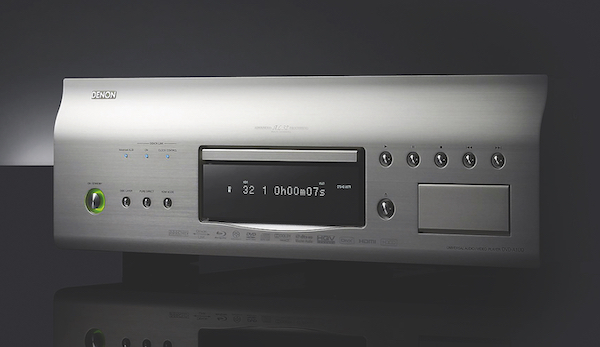
Blu-ray began life in the early 2000s when CD co-inventors Sony and Philips overcame previous rivalries (most recently around consumer digital audio formats – Sony pushed advanced magneto-optical technology for its MiniDisc, while Philips' DCC updated its analogue Compact Cassette) and joined forces again to work on a blue-laser project, known as 'DVR Blue'. Prototype hardware was demonstrated as far back as October 2000 – not
at the annual CES shindig in Las Vegas, but at the lower-profile Japanese CEATEC trade show.
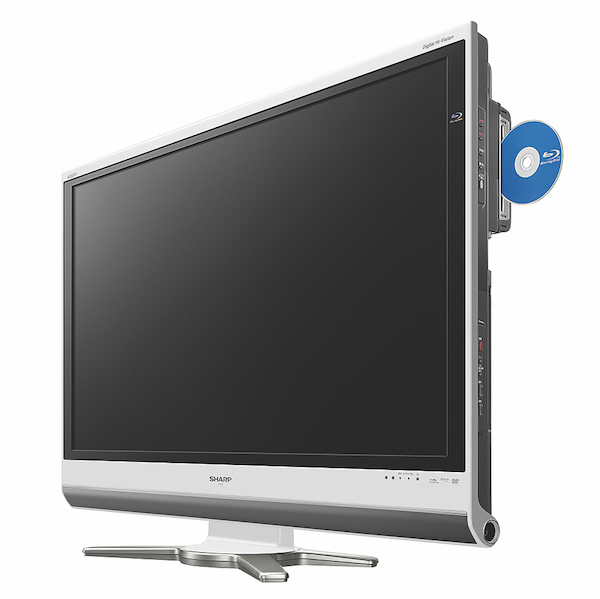
At packed CES press events in January 2006, the first Blu-ray players were announced. On their stands, firms like Sony, Pioneer, Panasonic, Mitsubishi, LG and Samsung proudly showed off new wares. Sony's eagerly anticipated PlayStation 3 console, rumoured to be harnessing Blu-ray's enormous capacity for immersive and complex games, was also on view.
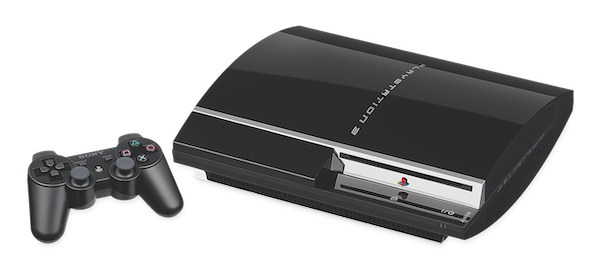
Who got there first in terms of hardware? In the end, Samsung unexpectedly pipped the likes of Philips and Sony to the post with its $1,000 BDP-1000. This luxurious tech statement, with its flap hiding CompactFlash and SD card slots for digital photo replay, had component outputs as well as an HDMI port. Also included was a 5.1 audio output to feed your AVR those uncompressed 5.1 soundtracks.

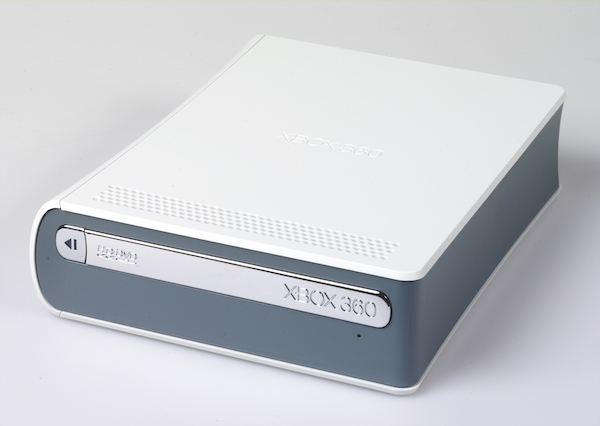
What happened next? Blu-ray took off, despite the expense, relative to DVD, of its blue-cased premium disc. Blu-rays were anywhere between 50 per cent and 100 per cent more expensive than the older standard-def format, yet many were prepared to pay the extra. According to US trade publication Home Media Magazine, 2.3million discs flew off American shelves in October 2008 – the month the 1,000th Blu-ray title (a Platinum Edition of Disney's Pinocchio) was released. In the same month of the previous year, only a fifth of that number were sold. Sales of the PS3 also bloomed by 40% in 2008 alone, which can't have hurt the BD format at all.

Today, as a mass-market product, Blu-ray is on the wane alongside other disc media. Streaming is more convenient for many consumers, with no discs to occupy scarce space or mislay, and far better value – a monthly Disney+ subscription, for instance, is less than the cost of a typical BD. The BDA countered streaming with Blu-ray's Ultraviolet 'digital rights locker', which provided free access to streams of the movie you had just bought, but who needed that?
 |
Home Cinema Choice #351 is on sale now, featuring: Samsung S95D flagship OLED TV; Ascendo loudspeakers; Pioneer VSA-LX805 AV receiver; UST projector roundup; 2024’s summer movies; Conan 4K; and more
|


